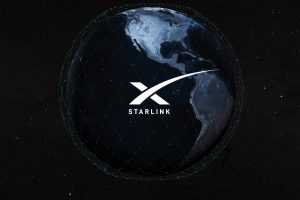Key Points
- 🚀 SpaceX is planning to launch 22 Version 2 mini Starlink satellites.
- 🗓️ The launch is scheduled for 7:34 p.m. ET (23:34 UTC) on July 22nd from Cape Canaveral Space Force Station in Florida.
- 🛰️ The satellites are part of Group 6-6 and feature upgraded V2 mini-satellites with improved bandwidth and thrust.
- 🛰️ Since February 2023, SpaceX has launched 123 upgraded satellites, with 11 deorbited, 7 operational, and 93 moving towards their correct orbits.
- 🚀 The Falcon 9 booster for this mission is B1076, which will attempt landing on the droneship ‘Just Read the Instructions.’
- 🌦️ Weather conditions show a 40% chance of acceptable conditions at lift-off, with opportunities available until 10:56 p.m. ET.
- 🌅 The launch, scheduled around 45 minutes before sunset, could offer a spectacular sight if the weather permits.
SpaceX is scheduled to launch 22 V2 mini Starlink satellites from Cape Canaveral Space Force Station in Florida at 7:34 p.m. ET (23:34 UTC) on July 22nd. This will mark the company’s 6th mission of the month as the Falcon 9 rockets the Starlink satellites into a 43-degree orbital inclination on a South Easterly trajectory.
The upcoming mission, known as Group 6-6, will carry 22 upgraded V2 mini-satellites with enhanced capabilities, capable of handling 4 times more bandwidth than their predecessors. These satellites also feature improved thrust for better on-orbit maneuvering, thanks to new Argon Hall thrusters.
Since their introduction in February 2023, SpaceX has successfully launched 123 of these upgraded satellites, with 11 having deorbited, according to data from Jonathan McDowells Starlink tracking site. Presently, 7 satellites are in their operational orbits, while 93 are on their way to their designated orbits.
The Falcon 9 booster designated for this mission is Booster 1076, which has previously supported 2 Starlink missions, 2 commercial payloads launches, and an International Space Station (ISS) resupply mission. This launch will mark the 6th launch and landing of this booster, and it is expected to land on the droneship ‘Just Read the Instructions’ approximately 8 and a half minutes after liftoff.

As of now, the weather forecast for this mission indicates a 40% chance of suitable conditions for lift-off. Fortunately, SpaceX has several opportunities for the launch, with the window extending until 10:56 p.m. ET (02:56 July 23rd), and the weather is expected to improve to an 85% chance of acceptable conditions toward the end of the window. In the event that the launch cannot take place on the 22nd, there is an additional launch window available on the evening of July 23rd, between 7:09 p.m. ET and 10:31 p.m. ET.
If thunderstorms stay clear and considering the launch is currently scheduled to occur approximately 45 minutes before sunset, it promises to be a remarkable sight. Don’t miss the opportunity to watch the webcast and witness the event!





